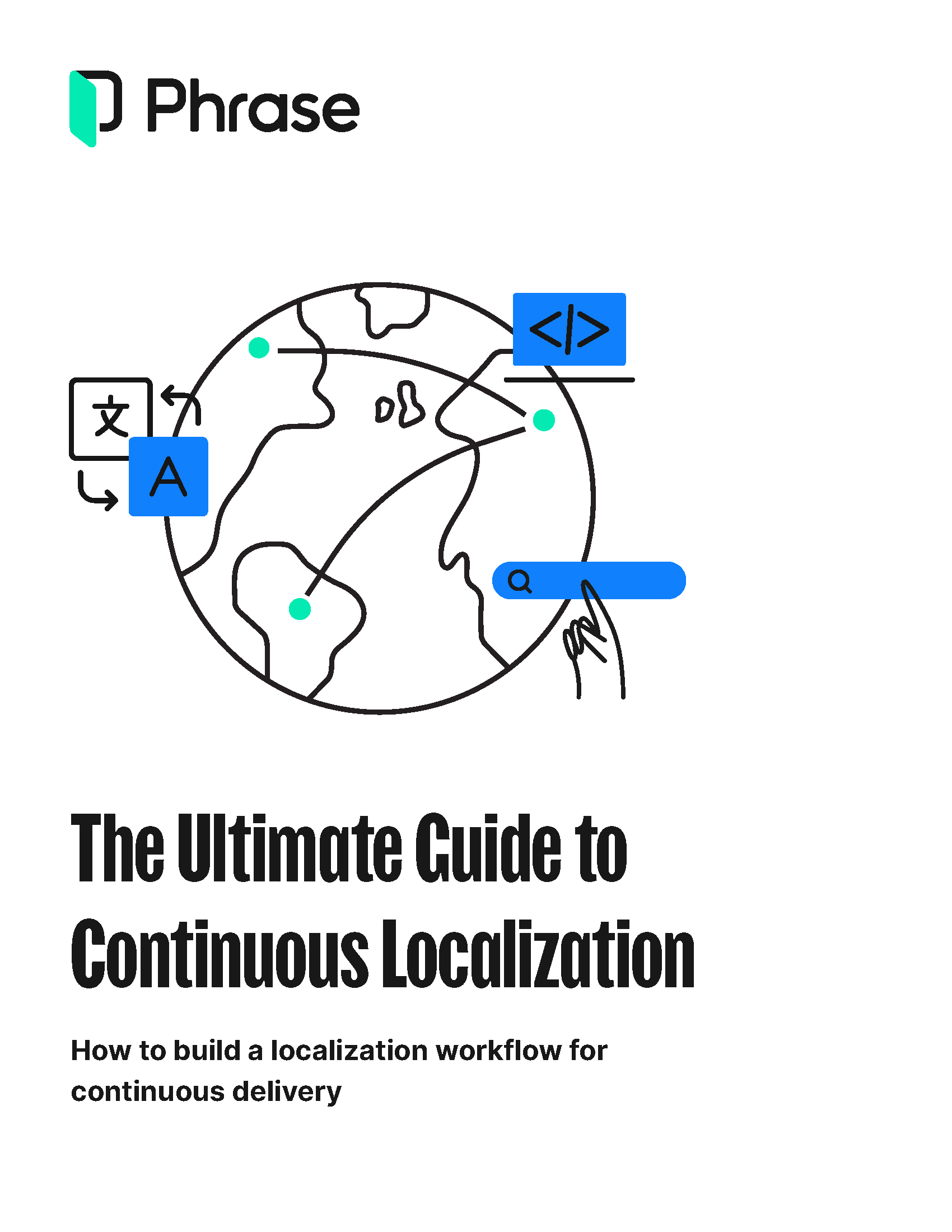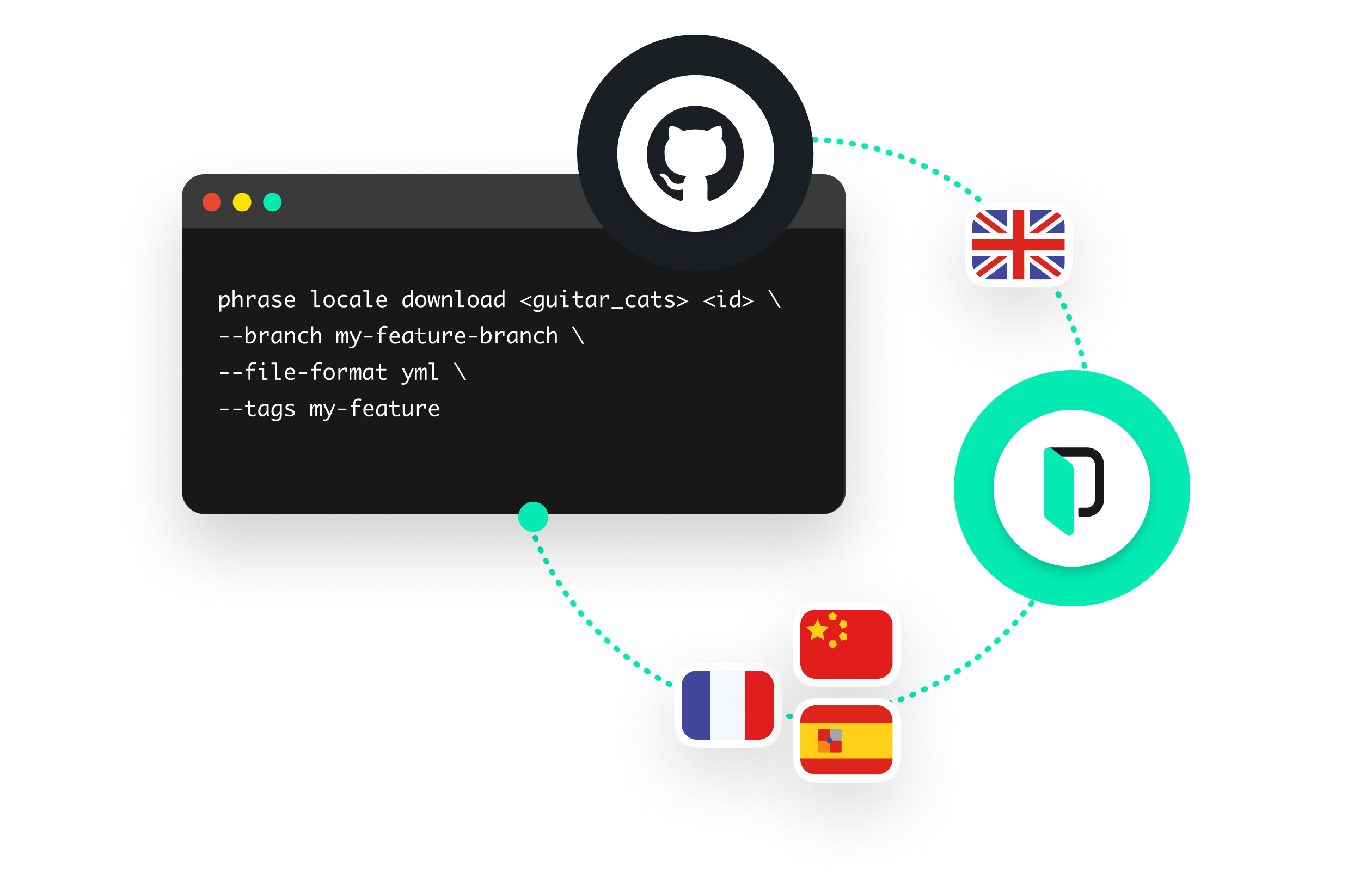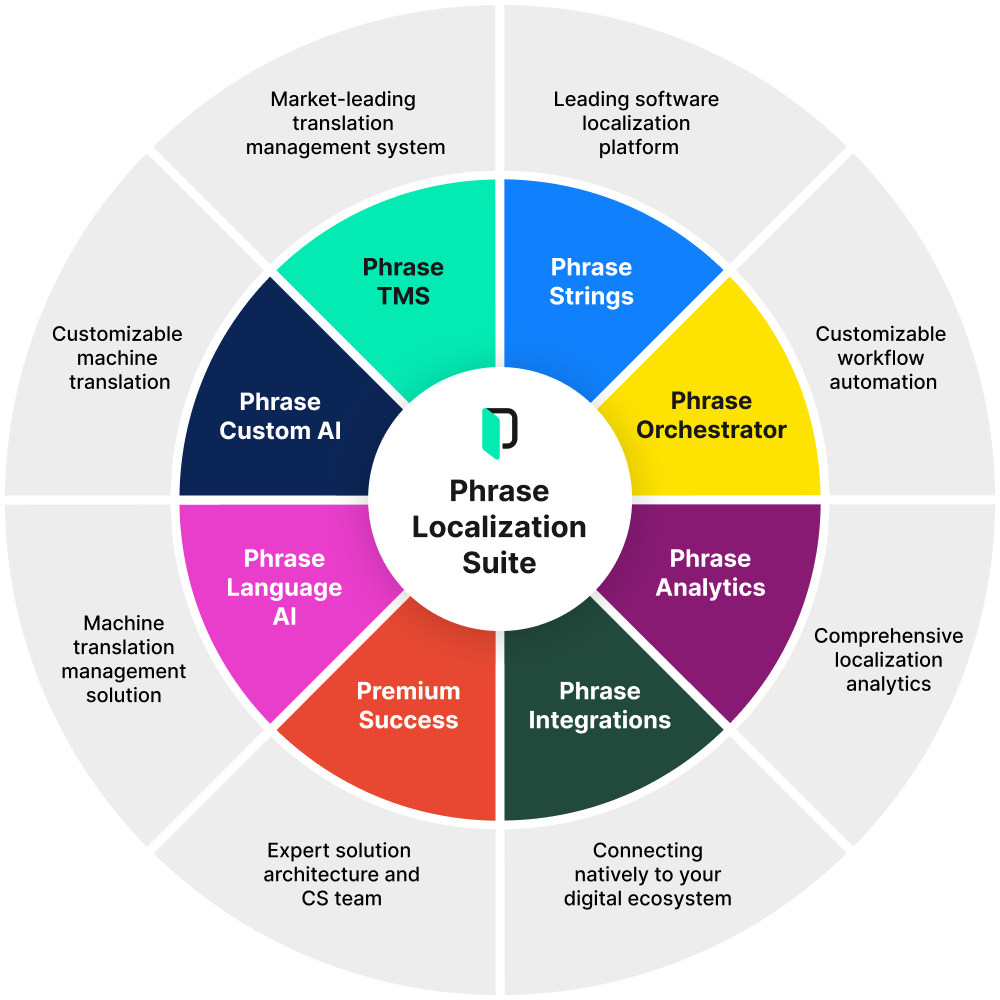Localization strategy
Coding Your Path to International Excellence with Continuous Localization: A Developer’s Guide

At the threshold of Industry 4.0, the Fourth Industrial Revolution is in full swing. McKinsey studies show that digital transformation is sweeping through the business landscape, driven by cloud-powered applications, advanced analytics, process automation, and more. With various industries embracing enhanced connectivity, developing globally adaptable software is now a strategic imperative.
This has 2 immediate consequences for developers in the tech industry. Firstly, speed-to-market has taken on a new level of importance, particularly when aiming to launch software in various markets simultaneously. Secondly, customer experience reigns supreme: It’s not just about being visible—you must be remarkable. This is the era of the discerning customer. Given the multitude of products available, the user experience (UX) you offer must be impeccable.
That’s why, when developing new products, it becomes mission-critical to stay efficient with both planning and resources—and adopt best practices that enable you to create software ready to cater to local market preferences from that start. Integrating continuous localization with development sprints is now a go-to approach for forward-thinking companies. Keep reading to discover how continuous localization enhances the prospects of long-term success for your global software.
Making the case for continuous localization in agile environments
Time is a precious commodity for development teams committed to delivering multilingual software to a global audience. The time spent on repetitive or manual tasks, such as preparing files for translation and waiting for translators to send them back via email, can be redirected towards more strategic endeavors: researching user expectations, optimizing the codebase, improving security, and more.
Forward-thinking tech companies have found a solution to help development teams regain valuable time and resources: continuous localization. By bringing the iterative nature of agile methodology to localization, developers are freed from tedious tasks and can stay focused on doing what they do best—creating code.

Free download
How to build a localization workflow for continuous delivery
Explore how to implement continuous localization into agile product development to optimize content quality, shorten the release cycle time, and reduce costs.
Considering the needs of all target markets as development begins and creating a robust infrastructure for fast, uninterrupted localization allows you to take advantage of working with a single codebase and efficiently deploying software versions tailored to specific markets.
Still, when development teams who aren’t used to working this way suddenly have to coordinate their efforts with an internal localization team or an external language services provider (LSP), the lack of established processes and tools can quickly become a barrier to unlocking the full potential of continuous localization.
Unify localization workflows
Source copy for localization usually comes from across the entire organization. However, fragmented localization workflows are inefficient and can lead to cost overruns. When different teams handle development and localization in silos, you run the risk of delays and rework, especially when you have a global product to ship.
That’s why centralizing all localization work with a cross-functional team is a smart move. A centralized team handling localization ensures all job requestors are in sync. Moreover, adopting a one-team-one-tool approach can significantly streamline the localization workflow. You eliminate duplication of effort and tools, paving the way for an uninterrupted stream of just-in-time delivery of localized content that slots right back into the software build.
Rethink the localization tech stack
Relying on outdated or ill-fitting localization technology is a major cause of delays and rework. When teams use various disconnected tools, coordination and visibility suffer, resulting in content loss, bottlenecks, and undetected errors.
The necessary rework strains your resources and extends the time to market, potentially impacting the software product’s profitability and competitiveness. In the tight world of development sprints, significant rework is costly.
To avoid these issues, it’s crucial to have a dedicated localization technology solution that acts as the single source of truth for all multilingual product copy.

Free download
Say goodbye to spreadsheets
Learn how to automate localization workflows and streamline time-consuming and costly processes to release better multilingual content more quickly and efficiently.
Why you need cloud technology to achieve continuous deployment for global software
To make the best decisions about your tech stack, it’s crucial to understand the needs of both development and localization. This allows you to evaluate how localization impacts your development processes and vice versa.
Choosing the right localization technology is as important as selecting the appropriate tools for your development team. With numerous localization platforms available, finding one that aligns with your organization’s specific requirements is essential.
Ultimately, the goal is to establish a streamlined and automated continuous localization process alongside your software development cycles. By leveraging cloud technology, you can achieve this seamless integration and ensure efficient deployment across multiple languages.
From on-premise to cloud localization technology
In the past, development teams often created their localization solution on-site. Nevertheless, the rise of cloud technology gives companies many different options beyond what was available before.
Cloud-based localization platforms offer similar benefits to on-premise solutions—without requiring costly hardware or additional resources to maintain the solution on-site.
With end-to-end data encryption during transit and storage, companies now enjoy the same level of security for their localized data as they would with an on-premise solution, but without the complexities and expenses of managing their infrastructure.
Considering the significant effort involved in building a custom solution (particularly during constant business growth) and knowing that cloud solution security increasingly rivals on-premise options, it’s now easier than ever to host your localization workflow in the cloud.
Trusted localization technology providers prioritize their product offerings’ security, allowing you to focus on your work without interruptions and share data in a secure environment.
A secure localization solution always:
- Ensures the highest level of physical security for its servers
- Employs an information security management system (ISMS) to effectively manage and safeguard sensitive information
- Adheres to industry-standard security compliance regulations
- Holds an ISO 27001 certification, demonstrating commitment to information security
- Provides security awareness training to employees
- Conducts security audits to identify and address potential vulnerabilities
- Follows the principle of least privilege to limit data access to authorized individuals only
- Ensures that all data, both at rest and in transit, is securely encrypted to prevent unauthorized access
- Creates backups to ensure easy data recovery in the event of data loss
- Devises comprehensive disaster recovery plans as contingency measures to mitigate potential disruptions
Selecting the best localization solution for your needs
While security is an important concern when evaluating localization software, it’s essential to recognize other key capabilities of modern-day solutions. Choosing one that enhances and streamlines your workflow allows developers to work in familiar ways instead of requiring them to adapt how they work to the software solution.
| 5 key factors for developers to consider when choosing localization software | |
| Centralization | Does the localization technology provider offer a centralized platform for managing all localization projects? This includes assigning tasks, setting deadlines, and tracking project status. |
| Scalability | Can the localization solution scale with your company’s growth? Ensure it can handle an increasing number of languages and file formats without compromising performance. For example, it should parse files out of the box and generate localized versions regardless of your development tools. |
| Automation | What automation capabilities does it have? This includes webhooks, native integrations, an API, and more. For example, automatic file synchronization reduces errors by providing up-to-date source files to translators. |
| Integration | What native integrations with other software vendors does it provide? Can you achieve custom integrations via its API? Is its CLI client configurable enough to empower developers to issue localization requests without leaving the command line? |
| Control | Does it provide full visibility into every aspect of the localization process? A solid solution allows assigning distinct roles to each member and shows their impact on the project. |
Automate, integrate, and collaborate in Phrase
Gone are the days of slow, manual, and costly localization processes. Continuous localization—a moving target by definition—is the new standard, redefining how you play the global game. By incorporating the right localization solution into your tech stack, you can deploy multilingual software for consumers in different target markets more efficiently than ever.
The Phrase Localization Platform provides the flexibility, connectivity, control, and scalability you need to future-proof your localization workflow for continuous deployment across markets. A fully integrated suite of translation automation technology, Phrase comes with various products that meet the needs of agile development teams.

To top it all off, you can rely on 50+ native integrations to connect, automate, and streamline your workflows across the entire Phrase Localization Platform—from design to development, from automated project creation to version control systems, from programmatic API calls to on-the-fly requests on the command line. Your team can work with Phrase directly from your favorite tools.
Last but not least, with a Success Plan subscription, you can access dedicated solution architects and customer success managers who can help with custom configuration, personalized consulting, and extensive support for integrating the products of your choice into your existing tech stack or migrating from a different platform.
Speak with an expert
Want to learn how our solutions can help you unlock global opportunity? We’d be happy to show you around the Phrase Localization Platform and answer any questions you may have.






